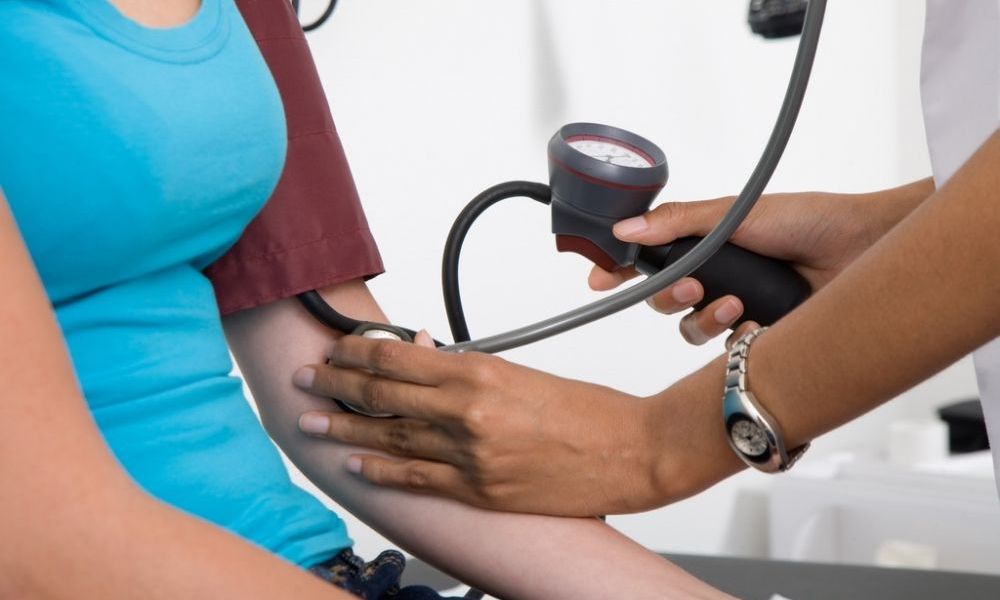Blood Pressure of 130 is The New ‘High,’ According to First Update of Guidelines in 14 Years
Leading heart health experts tightened the guidelines for high blood pressure Monday, a change that will sharply increase the number of U.S. adults considered hypertensive in the hope that they, and their doctors, will address the deadly condition sooner.
The American Heart Association, the American College of Cardiology and nine other groups redefined high blood pressure as a reading of 130 over 80, down from 140 over 90. The change, the first in 14 years, means that 46 percent of U.S. adults, many of them under the age of 45, now will be considered hypertensive. Under the previous guideline, 32 percent of U.S. adults had high blood pressure.
“We’re recognizing that blood pressures that we in the past thought were normal or so-called pre-hypertensive actually placed the patient at significant risk for heart disease and death and disability,” said Robert M. Carey, co-chairman of the group that produced the new report. “The risk hasn’t changed. What’s changed is our recognition of the risk.”
But the report’s authors predicted relatively few of those who fall into the new hypertensive category will need medication. Rather, they hope that many found with the early stages of the condition will be able to address it through lifestyle changes such as losing weight, improving their diet, getting more exercise, consuming less alcohol and sodium and lowering stress.
The guidelines should be influential in clinical practice, with most health care providers expected to follow the recommendations. In addition to tightening the definition of high blood pressure, the new report does away with the old category of “pre-hypertension,” which was defined as a top (systolic) reading of 120 to 139 or a bottom (diastolic) number between 80 and 89.
The new guidelines create categories including “elevated,” “Stage 1 and 2 hypertension,” and “hypertensive crisis,” each characterized by various blood pressure readings. Normal blood pressure still will be considered 120 over 80.
The systolic reading refers to the pressure when the heart contracts and sends blood through the arteries. Diastolic pressure is measured when the heart relaxes between beats.
The guidelines suggest that doctors recommend lifestyle changes for people found to have elevated blood pressure. Those with Stage 1 hypertension should be assessed for their 10-year risk of heart disease or stroke under the parameters of a widely used matrix for cardiovascular health. Those with more than a 10 percent chance, or other complicating factors, should try medication.
“An important cornerstone of these new guidelines is a strong emphasis on lifestyle changes as the first line of therapy. There is an opportunity to reduce risk without necessarily imposing medications,” said Richard Chazal, the immediate past president of the American College of Cardiology.
The authors of the report expect that many adults younger than 45 will find themselves included under the new threshold. The lower score is expected to triple the number of younger men considered hypertensive and double the number of younger women with high blood pressure.
The authors of the report also want people already in treatment to try to reach the new blood pressure goal.
High blood pressure is the leading cause of death worldwide and the second-leading cause of preventable death in the United States, after cigarette smoking. Hypertension leads to cardiovascular disease, strokes, severe kidney disease and other maladies that kill millions every year. Blood pressure is affected by a wide variety of factors including genetics, age, diet, exercise, stress and other diseases such as diabetes. Men are more likely to have high blood pressure than women and blacks are more likely than whites. Many people are unaware that they have the condition because there are no symptoms.
Much of the data to support the update came from Systolic Blood Pressure Intervention Trial or SPRINT trial, a large-scale study of more than 9,000 people sponsored by the National Heart, Lung and Blood Institute. When the results were first presented in 2015, they shook many assumptions about blood pressure management.
The study showed that bringing blood pressure below 120 rather than the recommended 140 to 150 could reduce the risk of heart attack and stroke. While that research only included people 50 and older and at high risk for heart problems, subsequent studies have shown this benefit appears to extend to younger people as well, said Chazal, who is medical director at the Lee Memorial Health System in Fort Myers, Fla.
Thomas R. Frieden, the former director of the U.S. Centers for Disease Control and Prevention who now runs a global health initiative that focuses on heart disease and stroke, said the “big news about this guideline is it should end forever any debate about whether people should be treated with medicines once they hit 140/90.” He said that until now there has been “a perspective that it’s not that big of a risk, but that’s just wrong.”
“The fact is lower is better,” Frieden said, “Even what we considered mild hypertension before is a deadly disease.”
Calling hypertension “the world’s most under-addressed preventable health problem,” Frieden said that, ironically, one of the reasons treatment has been slow to catch on in some parts of the world is because the medications are not as profitable as many others. The four main classes of drugs for blood pressure have generic versions and can be as cheap as a few dollars a month. Another barrier is what Frieden, who is now president and CEO of Resolve to Save Lives, called “therapeutic inertia,” the reluctance of some physicians and patients to try medication when a person with high blood pressure appears to be otherwise healthy.
“It is not easy to take drugs for the rest of your life for a condition you are not sick from,” he explained. “There is a reason it’s known as the silent killer.”
Four years ago, the same two groups changed their recommendations for the way doctors should assess cardiovascular risk, moving away from a focus on low-density lipoproteins — the so-called bad cholesterol — to a more well-rounded consideration of factors such age, weight, smoking and other factors.
Source: WashingtonPost
“Blood pressure of 130 is the new ‘high,’ according to first update of guidelines in 14 years” by:Lenny Bernstein and Ariana Eunjung Cha


